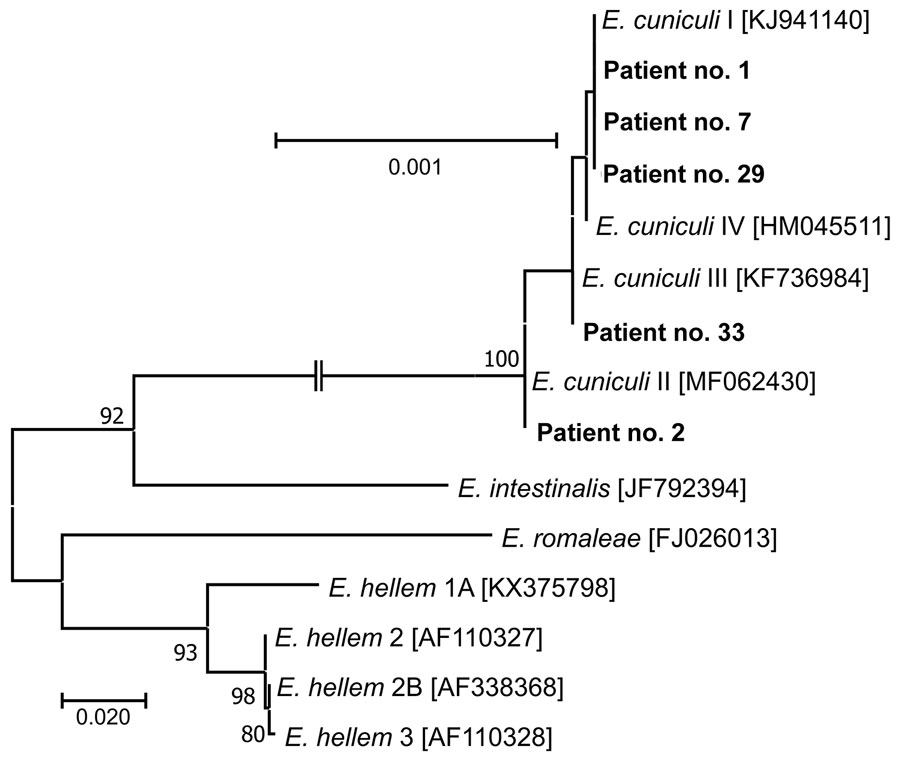Volume 30, Number 3—March 2024
Research
Microsporidia (Encephalitozoon cuniculi) in Patients with Degenerative Hip and Knee Disease, Czech Republic
Figure 2

Figure 2. Phylogenetic analysis of Encephalitozoon cuniculi genotypes recovered from immunocompetent patients in study of microsporidia in patients with degenerative hip and knee disease, Czech Republic. Samples were collected from patients during May 2020–September 2021 at Bulovka Hospital in Prague. Partial sequences of 16S rRNA gene, the entire internal transcribed spacer region, and a partial sequence of 5.8S rRNA gene were inferred by using neighbor-joining analyses, and relationships were computed by using the Tamura 3-parameter method with gamma distribution and parametric bootstrap analysis of 1,000 replicates in MEGA X software (MEGA, https://www.megasoftware.net). Bold type indicates sequences obtained in this study, identified by patient number. Sequences for comparisons were obtained from GenBank; accession numbers are in brackets. Scale bar indicates nucleotide substitutions per site.